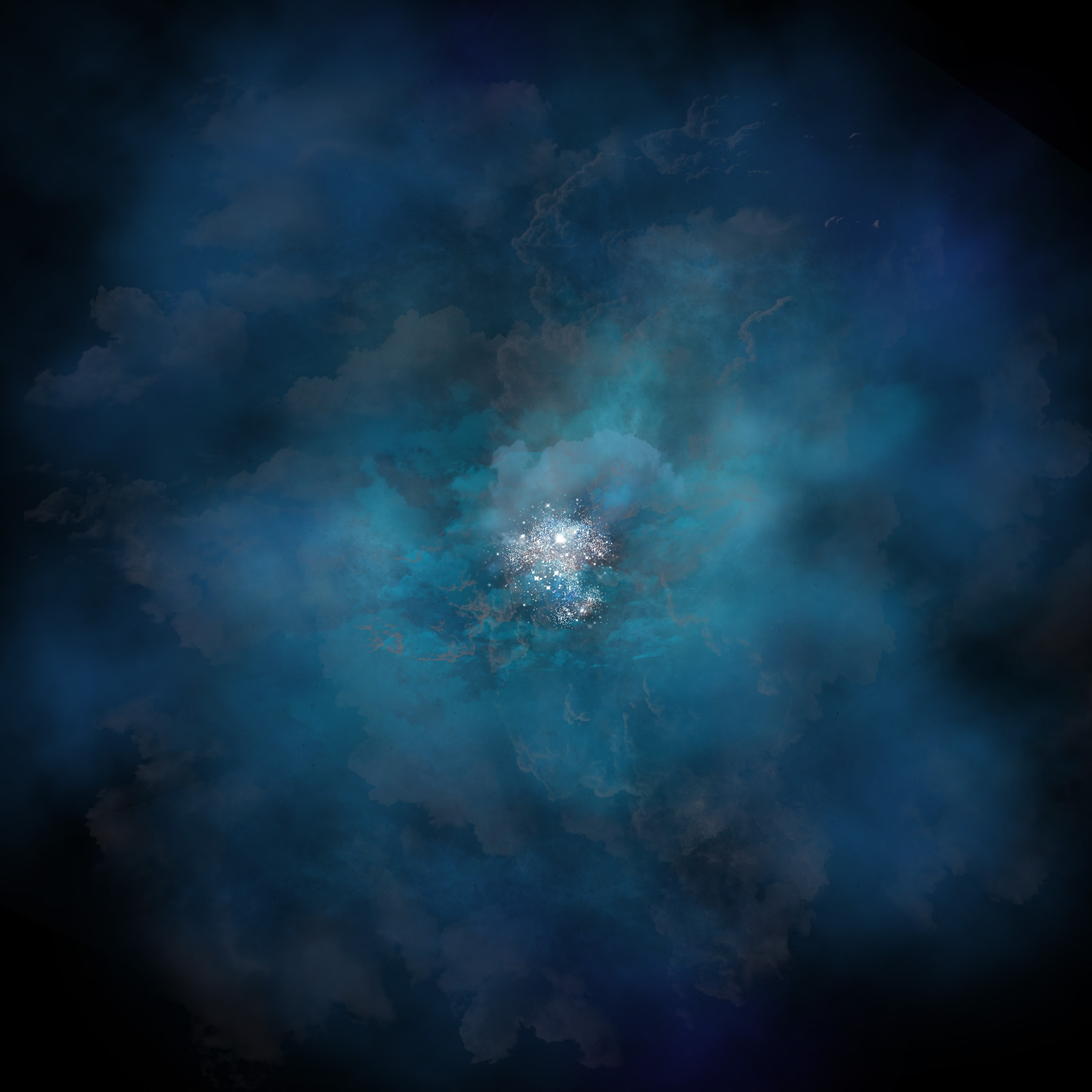A team of astronomers led by Dawn Erb at the University of Wisconsin-Milwaukee has used a new technique to unlock the mysteries of how the first galaxies formed and evolved.
In the study, published today in The Astrophysical Journal Letters, the researchers used new capabilities of the W.M. Keck Observatory in Hawaii to examine a particular ultraviolet wavelength of light that illuminates a gaseous halo surrounding Q2343-BX418, a small, young galaxy about 10 billion light years from Earth that is an analog for younger galaxies that are too distant to study in detail.
The gas halo around BX418 gives off a special type of light called Lyman alpha emission. This emission acts as a tracer for the gas because its photons are absorbed and re-emitted by hydrogen in the halo, enabling astronomers to study the motions and spatial extent of the gas. The halos surrounding galaxies are sites of complex interactions between inflows and outflows of gas, which regulate the fuel for star formation in the galaxy.
Read more from Keck Observatory or the UWM Report.
The work is: The Kinematics of Extended Lyα Emission in a Low-mass, Low-metallicity Galaxy at z = 2.3 by Dawn
Erb, Charles Steidel and Yuguang Chen,

Artist's conception of the extended gaseous halo surrounding the distant, low-mass galaxy. Credit: T. Klein, CGCA